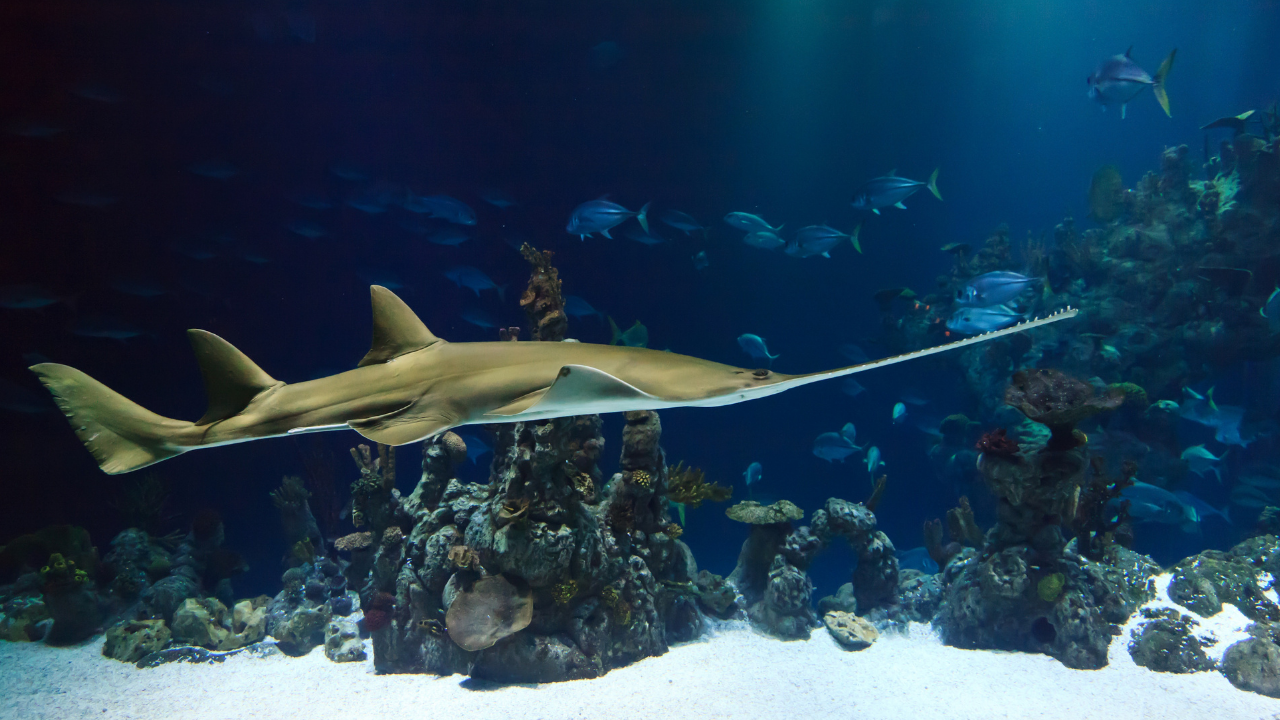
![]() Escrito por Yuliia Kliusa
Escrito por Yuliia Kliusa
11/13/2021 en Vida Marina
|
0 comentarios
The shark is undoubtedly the animal that most attracts divers. Those of us who have had the opportunity to meet face to face with them know that they experience a unique sensation that is not easy to describe. Perhaps it would be a good start to learn to distinguish the most common species of sharks.
That way, at least, we'll be able to say what kind of shark we had the pleasure of encountering, even if we don't know how to explain the experience afterwards.
Without going into the scientific classification of the families and all the species of sharks, we are going to review only the most distinctive characteristics of the shark species that divers tend to confuse more often or simply whose encounters are more coveted:
WHALE SHARK. I don't think there is a diver in the world who does not have a clear image of the whale shark, but just in case, we will remember its basic characteristic: huge. According to sources pending confirmation, it can measure 18 m. Its entire back is gray and covered with characteristic light spots. Its snout is flattened and much wider than the rest of the body to swallow large amounts of plankton, and thus, it swims slowly keeping its mouth open following the currents of plankton on the surfaces.
BASKING SHARK. It is also a large shark, since it reaches 10 m. It is dark in color (between brown and slate grey) and has very pronounced gill slits (to be able to open its mouth and also filter as much plankton as possible). Its snout, flattened and narrower than the rest of the body, is capable of opening up to twice its width.
GREAT WHITE SHARK. We have all seen the movie "Jaws", but be careful to view the cover as it is an edited photo. Spielberg, to give his shark a more terrifying image, preferred to modify the teeth by adding that of the Bull Shark (Carcharhinus Leucas). In reality, their teeth are triangular up to 8 cm in adults. Its main characteristics are: the white color of its lower part, clearly differentiated from the darker upper part, with a very defined line on the dorsal fins. A caudal peduncle with a very pronounced keel on both sides also helps to distinguish it.
JACKET OF LAW. This species of shark is the terror of the shipwrecked since, being a pelagic animal, it has no qualms about feeding on any resource that the immense ocean offers it. It is easily distinguished thanks to its large dorsal and pectoral fins with rounded tips and clearly white edges.
TIGER SHARK. Juveniles have more pronounced spots than adults and are shaped more like a leopard than a tiger. But when the tiger shark reaches its adulthood, the spots fade and become stripes like those of the tiger (hence its name).
HAMMERHEAD SHARK. Its snout has more or less large lateral expansions, making its flattened head T-shaped. It is considered the most "recent" shark species, at the end of the shark evolutionary scale.
GIANT HAMMERHEAD SHARK. The same as the previous one, but larger (up to 6 m). You have to be careful with this species as it is considered even more dangerous than the Tiger Shark or the Great White Shark.
BULL SHARK. The vast majority of divers confuse this shark with the Great White Shark. The Bull Shark is the typical shark that we will find in aquariums. It can be distinguished mainly by its long pointed teeth protruding from its mouth (the ones Spielberg used for his “Jaws”) and the location of its first dorsal fin further back than its pectoral fins, as well as an anal fin as large as the first. As they control their buoyancy with the help of the air they put into their stomach, it is not uncommon to hear them "burp", so keep your ears open and do not immediately suspect your partner.
LEMON SHARK. Its most distinctive characteristic, in my opinion, are its eyes, similar to those of a snake: small and clear, with a small pupil in the center. It also helps to differentiate it by a uniform light yellowish brown color throughout the body and its two dorsal fins of practically the same size.
WHITE TIP SHARK. It is differentiated by the white tips of its first dorsal fin and the upper lobe of the caudal fin on the dark gray color of the rest of the body. Not to be confused with the next species.
Comments